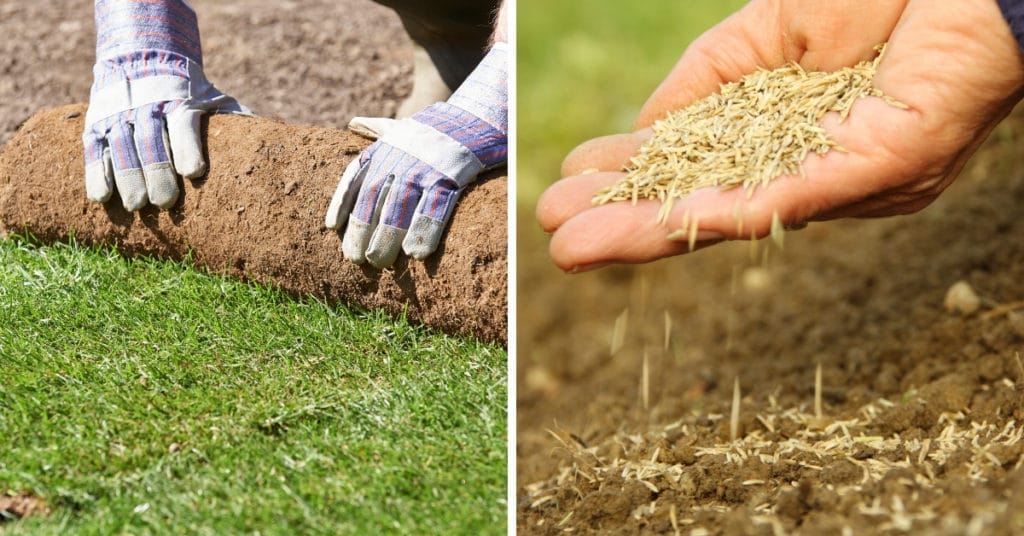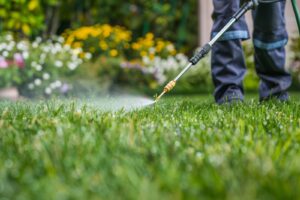If you’re looking to get a beautiful, lush lawn, there are two ways to go—seed or sod. Both can help you achieve your dream lawn, but both come with their own advantages and disadvantages. Get to know what both seed and sod entail to make the decision of which is best for your lawn and your situation.
Laying Sod
If you’re looking for an “instant lawn”, sod is the way to go. Laying sod is a transplanting of squares of already grown turf grass into your lawn. Because it’s a transfusion, it is often referred to as an instant lawn. These squares are laid on your lawn, then with time and proper care they will take root and begin to grow. For sod to successfully take root and begin to grow on its own, it will need specific care. This care will include sufficient water and light until the individual squares of sod begin to grow together. Once it has taken root, it will function as a regular lawn and require normal lawn care.
Advantages and Disadvantages
Because sod comes in already grown squares, it does not leave any exposed seed vulnerable to hungry birds. It is a quick solution to your lawn needs. With sod, you can go from a dirt lawn to a full, lush lawn overnight! Because it’s a quick solution, it is also a more expensive solution. Sod can be laid any time of the growing season, it is not as fickle as seed.
Sod offers less variety than seed—there are limited turf options. There any more options when it comes to seeding. For sod to have a successful transplant into your soil, it is best cut within 24 hours. It is also important to prepare your soil before laying sod. Give your soil plenty of water. When laying the squares, be sure to lay them tightly in a staggering format, similar to laying bricks. If there is space between the squares, you may have weeds grow in between them.
Planting Seed
When it comes to planting seed successfully, it can be a lengthy process, especially in comparison to laying sod. You’ll need to start by preparing your soil with a rototiller, then raking the soil, freeing it of any rocks, smoothing it over, and then adding topsoil, compost, and fertilizer. After all that, you’re ready to spread your seed. This is usually done with a speed spread. Next, you’ll need to cover up your seed with mulch. Keep your need seed moist and exposed to light so it can grow healthy and strong. With time, you’ll have a lush and thriving lawn!
Advantages and Disadvantages
Seeding your lawn is much cheaper than laying sod. It also gives more turf options and variety than sod. Seed does require more work and must be done in a certain window of the growing season to be successful. Seeding is most successful in the late spring, through the summer, or in the early fall. Young seeds can also be vulnerable to extreme temperatures. Your seeds needs may vary based on the climate you live in. Extreme weather can potentially ruin your seed. Heavy rainfall can erode and flood seeds, even after they’ve taken root.







